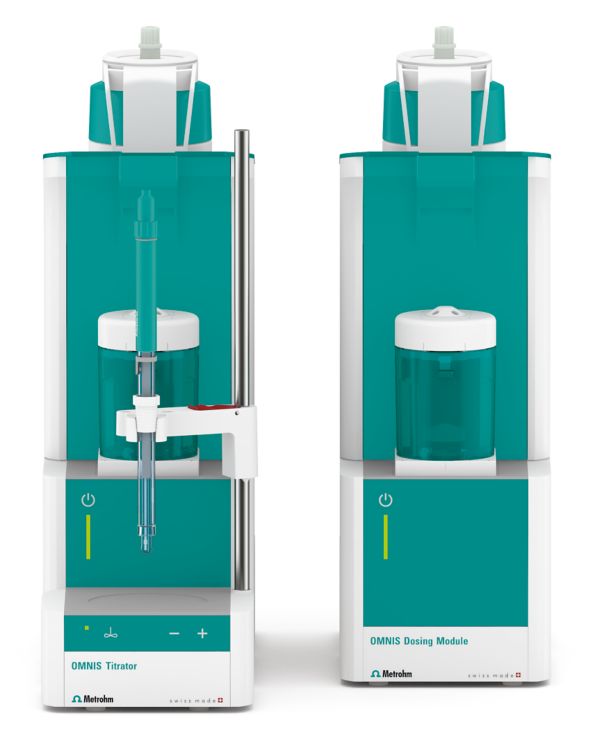The bromine number indicates the degree of unsaturation and relies on the simple addition of bromine to the double bond of alkenes. One mole of bromine is consumed for each mole of carbon-carbon double (C=C) bond present in a substance. In petroleum products, the bromine number corresponds to the olefin content.
Normally, chlorinated solvents are used for the determination of the bromine number. In this Application Note they have been replaced by toluene. This makes the determination more ecological. The titration is performed automatically on an OMNIS system in combination with a double Pt-wire electrode. With this setup, a fast and accurate determination by potentiometric titration can be realized.
The analysis is demonstrated on petroleum distillate.
According to the expected bromine number, an appropriate amount of sample is dissolved in toluene.

The analysis is carried out on an OMNIS system consisting of an OMNIS Advanced Titrator, an OMNIS Dosing Module, and a double Pt-wire electrode.
Sample and titration solvent (consisting of toluene, methanol, sulfuric acid, and glacial acetic acid) are pipetted into a thermostated vessel. While stirring, the solution is cooled to between 0–5 °C. After reaching this temperature, the solution is titrated with standardized bromine until after the equivalence point is reached.
Steep and smooth curves are achieved with this setup. The results are very reproducible with relative standard deviations < 0.2 %.
With the presented analysis, a bromine number of 10.80 g bromine/100 g petroleum distillate (n = 5; SD(rel) = 0.19%) is obtained.
After reaching the temperature of 0–5 °C, the titration is automatically started. There is therefore no further need to observe the temperature. The titration curves are steep and easy to evaluate. Due to this point, the reproducibility is very good and the criteria of ASTM D1159 regarding reproducibility is fulfilled.
Additionally, the exchange of chlorinated solvents by toluene leads to a more environmentally friendly application with a comparable precision.
Internal reference: AW TI CH1 1245-122017
 Share via email
Share via email
 Download PDF
Download PDF